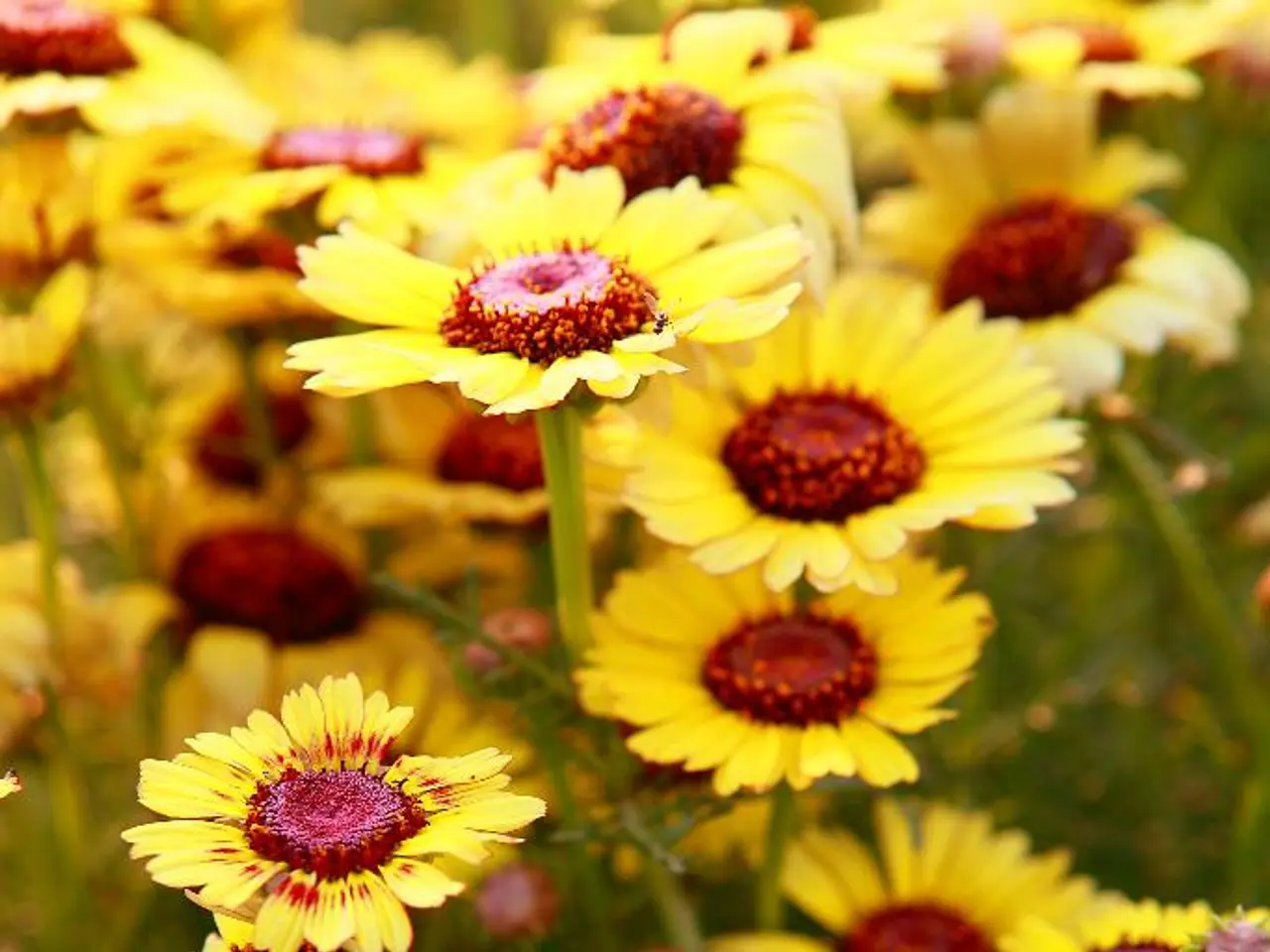Garden Cylindras: Incredible 10 Cyclads to Elevate Your Outdoor Space
In the realm of landscaping and indoor plant collections, cycads have gained a reputation for their unique, prehistoric appearance, glossy stiff leaves, large pinecone-like cones, and slow to moderate growth. These fascinating plants are prized for their timeless elegance and ability to thrive in various environments. Below, we delve into the key features, care requirements, and notes on use for some of the most popular and valued cycad species.
Encephalartos transvenosus, a South African cycad, boasts large, shiny dark green leaves with faint hairs and can grow trunks over 20 feet. This species is full sun tolerant and thrives in coastal areas, with cold tolerance down to 22°F. Known for its grandeur, Encephalartos transvenosus makes a bold landscape statement in large gardens and coastal areas, although it is a slow grower.
Macrozamia communis, a robust cycad with relatively easy care, is good for pots and suitable for indoor/outdoor rotation. It requires well-drained soil and filtered to partial sunlight, making it ideal for rock gardens, patios, or indoor seasonal placement.
Ceratozamia species, with stiff, glossy foliage and pinecone-shaped inflorescences, benefit from having multiple plants nearby for pollination. Moderate light and humidity are preferred for these cycads, making them attractive for collectors.
When it comes to care, most cycads prefer bright light. Outdoors, they thrive in full sun to partial shade, depending on the species. Indoors, place them near a bright window but avoid harsh direct midday sun for sensitive species. Well-draining soil is essential, and watering should be moderate, allowing the soil to dry slightly between watering to prevent root rot. Many cycads can tolerate mild frost but are generally tropical/subtropical. A balanced, slow-release fertilizer during the growing season encourages healthy leaf and cone growth.
Using cycads for beautification, species like Encephalartos transvenosus make bold landscape statements outdoors, while smaller species or young plants such as Macrozamia communis can be potted and rotated indoors/outdoors for seasonal display. Combining cycads with tropical plants like Philodendron “Red Congo” enhances visual impact with contrasting foliage colours and textures.
In summary, the top cycads are slow-growing but visually striking plants that require bright light, well-draining soil, moderate watering, and sometimes protection from extreme cold. Species like Encephalartos transvenosus stand out for outdoor grandeur, while Macrozamia communis suits indoor/outdoor use. Their natural, sculptural forms add timeless elegance to both indoor plant collections and outdoor landscaping schemes.
- For indoor/outdoor rotation, Macrozamia communis, a robust cycad with relatively easy care, thrives in well-drained soil and filtered to partial sunlight, making it suitable for rock gardens, patios, or indoor seasonal placement.
- Encephalartos transvenosus, a South African cycad, is a slow grower but boasts large, shiny dark green leaves and can grow trunks over 20 feet, making it a bold landscape statement in large gardens and coastal areas.
- Ceratozamia species, with stiff, glossy foliage and pinecone-shaped inflorescences, benefit from having multiple plants nearby for pollination and prefer moderate light and humidity, making them attractive for collectors.
- To care for cycads, most prefer bright light, with outdoor growth in full sun to partial shade depending on the species, and indoor placement near a bright window but avoiding harsh direct midday sun for sensitive species. Well-draining soil is essential, and watering should be moderate, allowing the soil to dry slightly between watering to prevent root rot.
- By adding cycads to your home-and-garden lifestyle, you can create striking visual impact, either outdoors with plants like Encephalartos transvenosus, or indoors/outdoors with smaller species like Macrozamia communis. Combining cycads with other plants, such as Philodendron “Red Congo”, enhances foliage color and texture contrasts for a visually appealing gardening experience.




